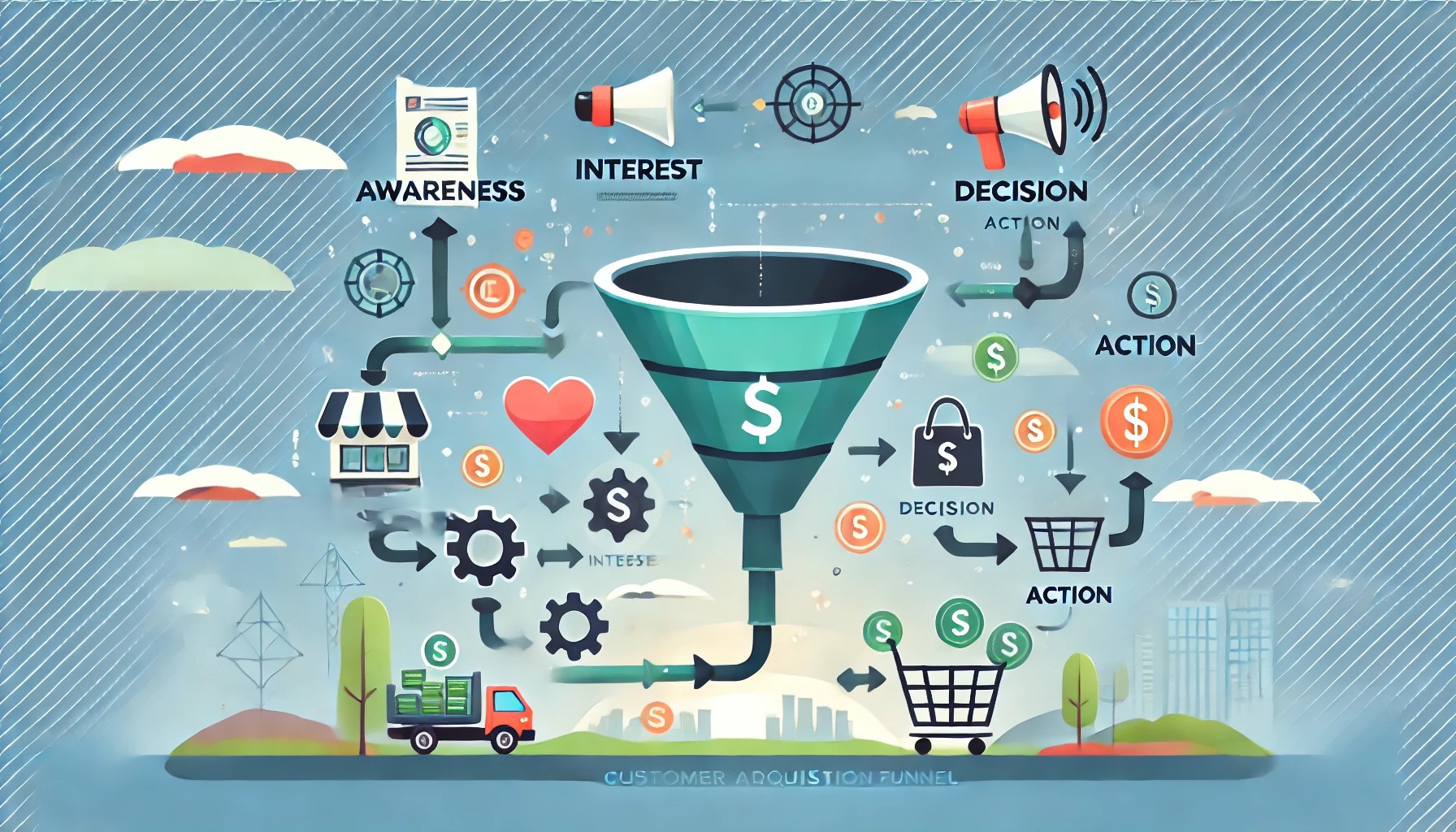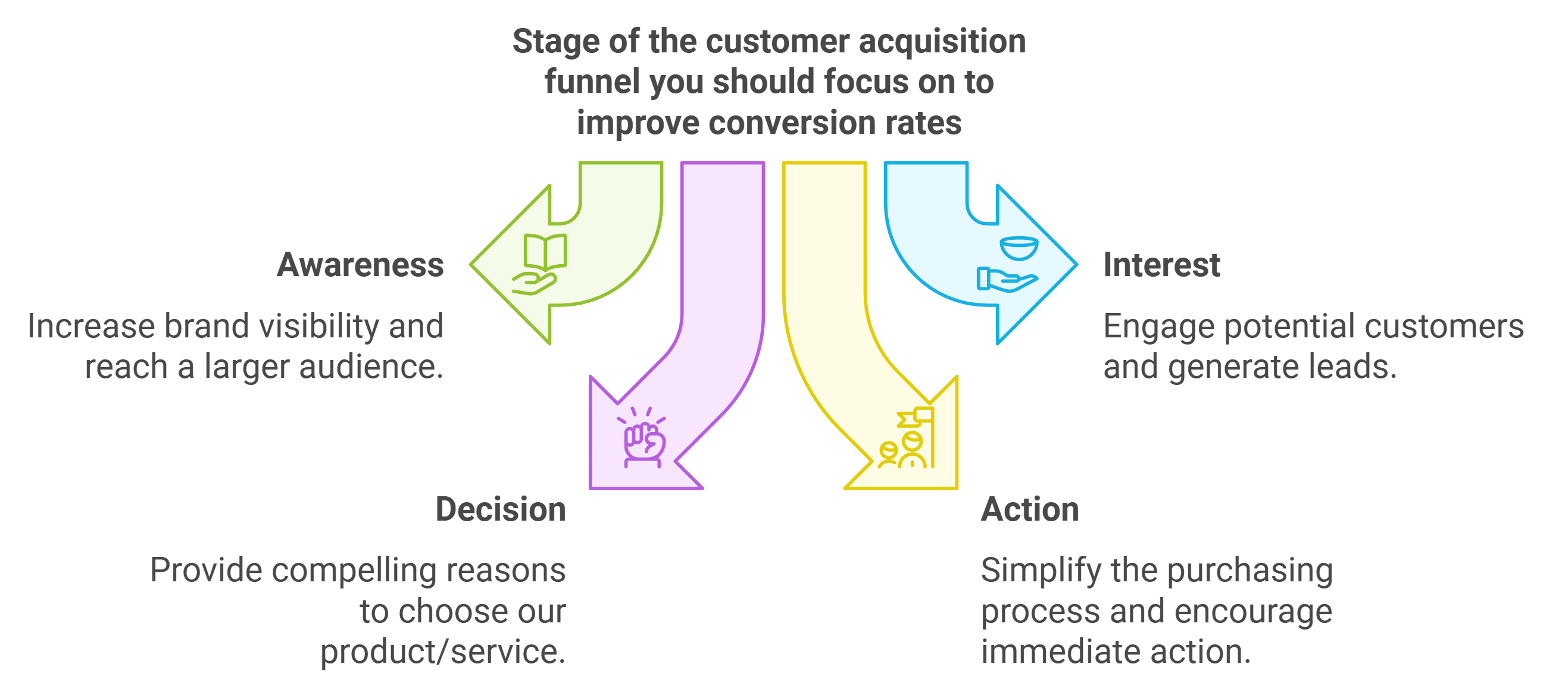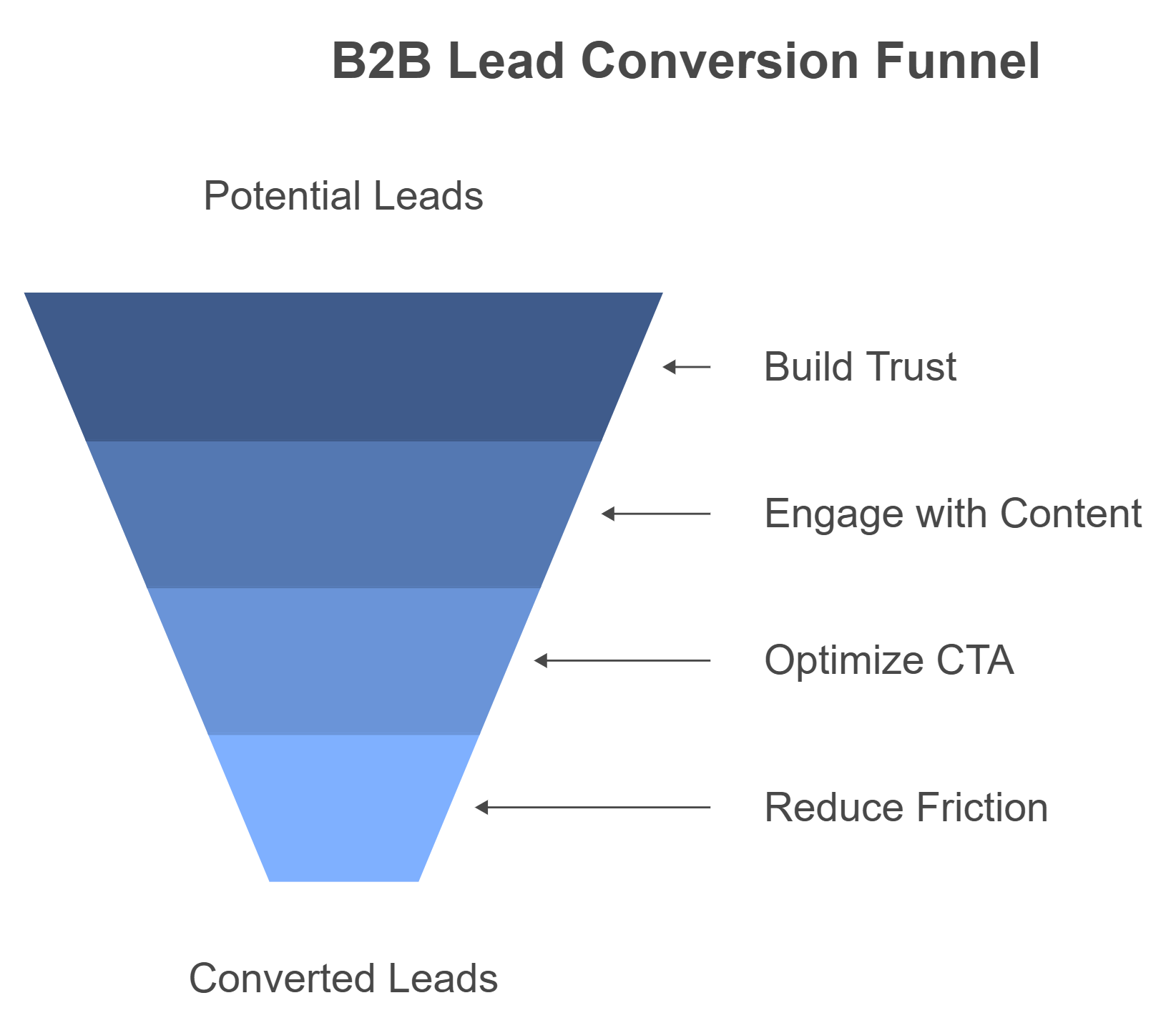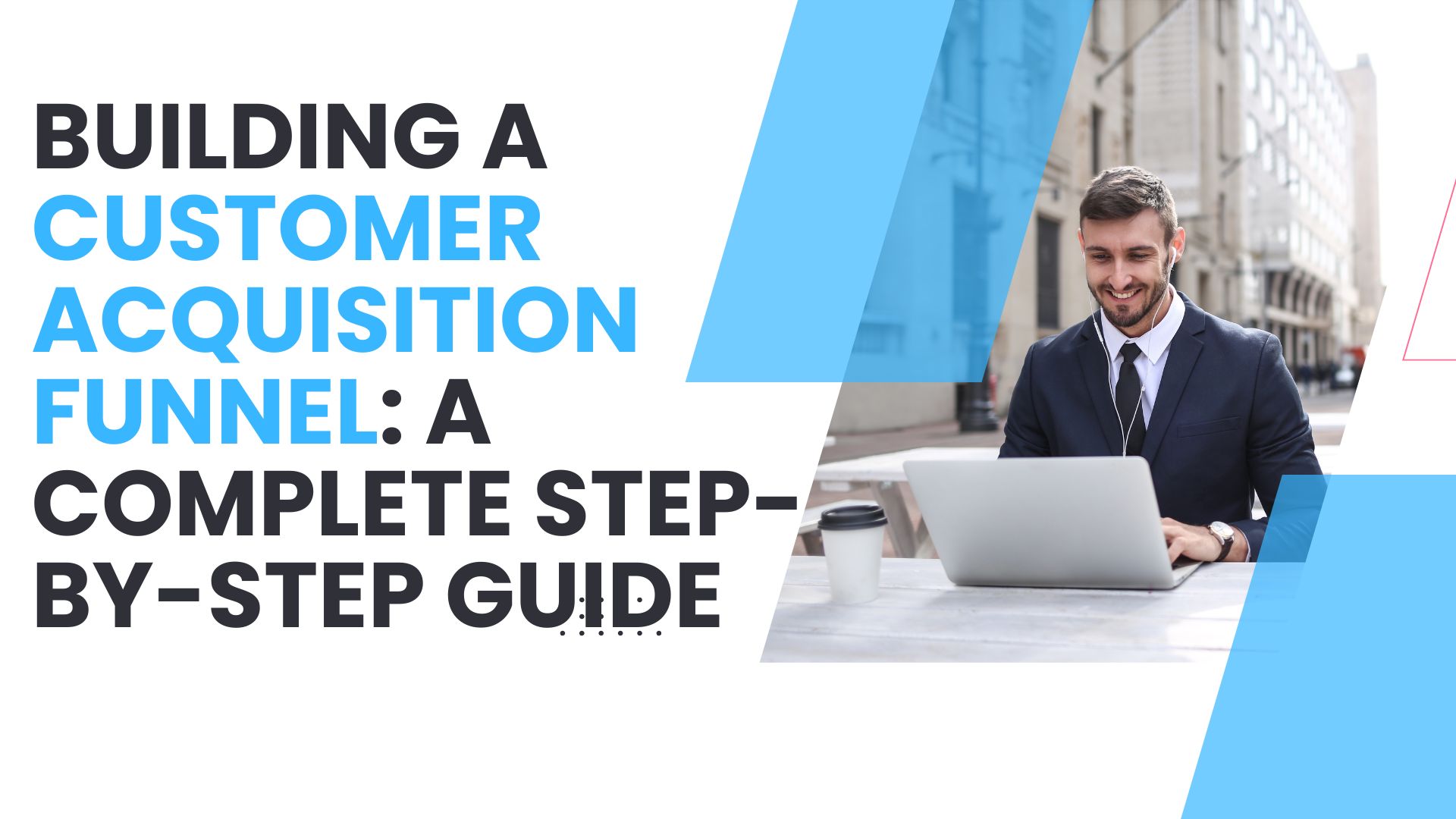Introduction

Customer Acquisition Funnel and the B2B buyer journey are important components of today’s competitive B2B environment that must be addressed. This guide will guide you through each step of funnel, explain how to properly match the journey and outline the best practices for customer journey mapping & optimization. Okay, let’s go deeper and discuss what steps you can take to take a prospect through the funnel and make them a loyal customer.
Understanding the Customer Acquisition Funnel, B2B Buyer Journey, and Customer Journey Optimization
But, let’s start with some definitions before going into the funnel stages. Customer Acquisition Funnel is a model that allows for mapping of the buyer journey and the process of optimizing this journey starting from the moment of awareness of the potential client up to the moment when the purchase is made and after it. Business to business buyer journey may be longer and less linear compared to B2C and it involves many decision makers and more time.
Customer journey management is all about refining every step to decrease customers’ resistance and to increase the chances of conversion at every stage.
Stages of the Customer Acquisition Funnel
Each stage of the Customer Acquisition Funnel has its own objectives, tactics, and best practices for engaging B2B buyers. Let’s break down each one.

Stage 1 – Awareness
Defining Awareness in the Business-to-Business Environment
The awareness stage is the time when potential customer come to know about the existence of your brand, product or service. In B2B, awareness can be as a result of materials created by the thoughts leaders, events that are organized, or research that firms conduct in an attempt to look for solutions to certain challenges.
The best strategies to nurture prospects and bring them to your funnel
To gain attention, produce useful assets that help answer key issues in the sector. Tools such as blogs, white papers and industry related insights are helpful in pulling B2B prospects into your funnel.
Stage 2 – Interest
How to Engage B2B Prospects
Having engaged prospects the next thing is to cultivate their interest in the product being sold. Communicate with them using information that is relevant to them and their problems.
Understanding and Establishing Trust within the Audience with Content Marketing
During this stage, things like webinars, case studies, and deep-dive blogs that show your audience that you know what you’re talking about work like a charm. It also contributes towards establishing credibility and affirming that in their minds you are a problem solver.
Stage 3 – Decision
Informing Educating Leads of Product/Service Fit
The decision stage is important, as that is when the prospective customers decide whether your offering meets their needs. It’s your job to make this as informed and positive a decision as possible.
Communications Tools and Techniques on Enhancing Prospects’ Decision Making
Offer detailed demonstrations of products, personal advice on what products to use, and personal consultation. ROI calculators or product comparison sheets are also helpful to get leads to consider the value proposition of your solution.
Stage 4 – Action
Converting Leads to Customers
The action stage is where the company converts the leads to paying customers. There are no drop-offs at this point, which is why a smooth and relatively easy procedure is crucial.
The Strategies to avoid a break in the process of converting a lead into a client.
Keep the call to action simple, easy sign up forms and keep the price information quite explicit to avoid any hitches in the conversion path. Trial periods or, for example, discounts for the first month allow the customer to make a commitment.
Stage 5 – Retention
From the perspective of the marketing strategist it is necessary to focus on ways that would guarantee long-term customer engagement and retention.
It is not the end of the road when a consumer converts to a buyer; maintaining that consumer is equally important. If a company builds a relationship after a sale has been made, it is likely that customers will return and recommend the product.
Techniques for Customer Retention:
This is the kind of engagement that should be maintained by regular follow-ups and sending personal offers, as well as creating special content for the audience. Other techniques that can boost up the level of retention is using loyalty programs, review and follow up or customer support on a regular basis.
Mapping and Optimizing the B2B Buyer Journey
When you are aware of the different stages that the buyer moves through when deciding to buy your products, you will be in a good position to create a customer acquisition funnel that fits the buyer’s journey.
Identify Key Buyer Personas
It is crucial to know whom you are selling to. You need to create detailed profiles of the target audience with their roles, the size of the companies they work for, and their pain points.
Develop a Buyer Journey Map
After you set up personas, designing a buyer journey map to describe all the interactions and possible challenges or opportunities.
Tools and Software for Buyer Journey Mapping
Platforms like HubSpot, Salesforce, and Lucidchart offer tools to visualize and refine the buyer journey, helping you adjust tactics based on real-time data.
Customer Journey Optimization Techniques
Personalize Content Creation for Each Stage of the Funnel
Personalized content helps increase engagement at every stage. Use insights from analytics to create specific content that addresses individual needs.
Data and Analytics for Enhanced Customer Insights
Utilizing analytics can reveal where customers drop off in the funnel and what drives conversions. These insights are key to effective customer journey optimization.
Integrating Automation in the Customer Journey
Automation, such as email sequences or lead scoring, allows you to nurture leads effectively without overwhelming resources.

Lead Conversion Strategies for B2B
1. Building Trust through Social Proof and Testimonials: In B2B, trust is crucial. Share testimonials, client logos, or case studies on your website to show prospects they’re in good company.
2. Utilizing Webinars, Demos, and Free Trials to Drive Conversion: Interactive experiences, like webinars and product demos, provide an opportunity for prospects to see your solution in action.
3. Optimizing Your Call-to-Action (CTA) for Higher Engagement: Make sure CTAs are clear, visible, and tailored to the prospect’s stage in the funnel. Experiment with action-oriented language that resonates.
4. Reducing Friction in the Conversion Process: Identify points in the conversion process where prospects might hesitate and make improvements, like simplifying forms or reducing steps.
Measuring Key Metrics for Customer Acquisition Funnel Success
Evaluating the success of your Customer Acquisition Funnel requires a close look at specific metrics at each stage. By tracking these, you gain insights into what’s working and where improvements are needed.
• Conversion Rates for Each Funnel Stage: Conversion rates tell you how well each stage of your funnel is performing. For instance, if prospects are moving smoothly from awareness to interest but not reaching the decision stage, you might need to strengthen your engagement tactics. Breaking down conversion rates by stage helps pinpoint where leads might be dropping off, so you can take targeted actions to improve those transitions.
Top Customer Acquisition difficulties and how best to address them
Continuous Improvement Process of Customer Acquisition Funnel: A Review of Best Practices
Conclusion
FAQs
- What is a customer acquisition funnel, and why is it important in B2B?
The customer acquisition funnel is a structured process that moves prospects through stages toward conversion. It’s vital in B2B because it helps nurture leads systematically. A well-optimized funnel increases efficiency and drives higher-quality conversions. - What is the difference between a CRM and a sales funnel?
A CRM (Customer Relationship Management) system manages ongoing customer relationships, tracking interactions, and customer data. In contrast, a sales funnel is a targeted process focused on converting leads into customers. Both work together, but each has a distinct role. - What are the stages of the marketing funnel?
The main stages include Awareness, Interest, Decision, Action, and Retention. These stages represent the customer’s journey from initial brand exposure to becoming a loyal customer. Each stage requires tailored strategies to nurture prospects effectively. - How can buyer journey mapping improve my B2B marketing strategy?
Mapping the buyer journey helps clarify each persona’s unique needs and preferences. This allows for more precise targeting, aligned with where they are in their decision-making process. It ultimately enhances the effectiveness of marketing and sales efforts. - What are some key metrics for evaluating funnel success?
Key metrics include conversion rates, Customer Acquisition Cost (CAC), and Customer Lifetime Value (CLV). These metrics reveal how well the funnel moves prospects toward purchase and the profitability of acquired customers. Tracking these helps refine and optimize the funnel. - How often should I review and update my customer acquisition funnel strategy?
It’s best to review and update the funnel quarterly or biannually to stay aligned with market trends. Regular updates help adapt to customer feedback and shifts in industry standards. This ensures the funnel remains effective and relevant over time.

